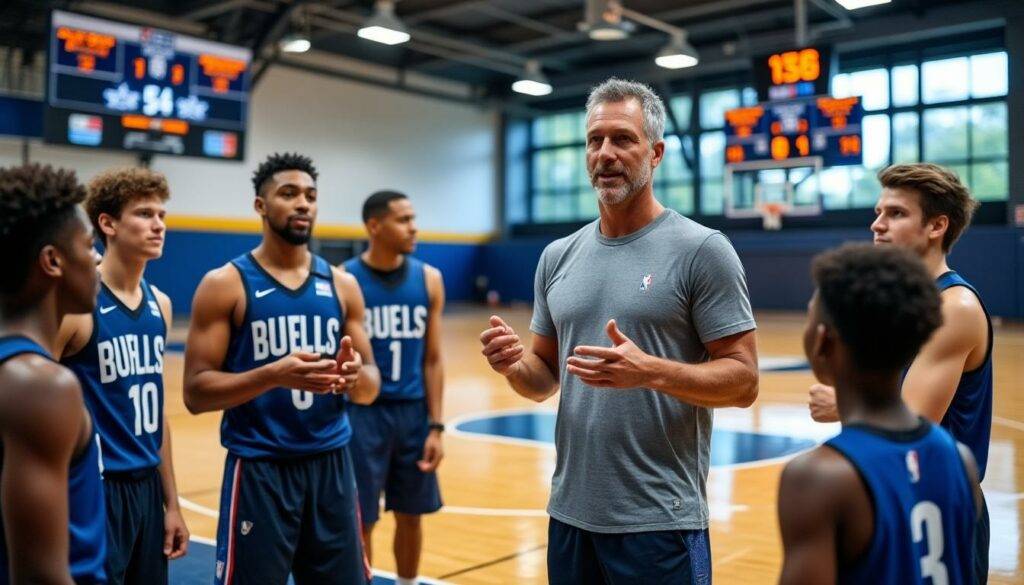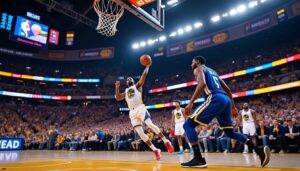Steve Kerr discusses the evolution of practice in today's NBA: 'We don't practice anymore

In a candid chat that mirrors the pace of today’s NBA schedule, Steve Kerr lays bare how practice has evolved, why the league feels more developmental than ever, and what that means for players like Jonathan Kuminga. The conversation underscores a shift that isn’t just tactical—it’s cultural, reshaping the way coaches teach, players learn, and teams win in a compacted calendar where every possession counts more than ever.
Steve Kerr On Practice Evolution In The Modern NBA: We Don’t Practice Anymore
The veteran coach argues that the baseline for development has moved from long, traditional practice blocks to a model built around continuous on-court learning, shorter sessions, and greater emphasis on player development within game tempo. He notes the NBA’s tightened schedule has compressed the window for fundamentals, making it harder for coaches to reap the same teaching returns as in years past. The takeaway is blunt: if you want to grow young talent now, you must innovate beyond the old practice paradigm.
- Development over repetition: clubs lean into targeted, high-leverage drills rather than hour-long practice marathons.
- Schedule as a driver: fewer back-to-back practices, more in-game learning sandwiched around games.
- Coaching rotation: Kerr highlights reliance on younger assistants to connect with developing rooks and sophomores.
Impact On Rookies And The Coaching Ecosystem
The reality Kerr describes isn’t abstract: rookies enter the league with limited on-court practice time, creating a steep learning curve. He cites the challenge of guiding a 19-year-old prospect while balancing the expectations of a veteran core. This environment amplifies the role of assistant coaches who connect with younger players and translate practice learnings into game-ready decisions.
- Rookies face a faster maturation arc, learning by playing and studying in real time.
- Head coaches must delegate more to support staff adept at individual development plans.
- Consistency in role definition becomes critical, especially for players with high ceiling but variable minutes.
The Kerr-Kuminga Dynamic: Development, DNPs, And The Runway For Growth
In 2021, Jonathan Kuminga arrived as a highly touted prospect whose early promise suggested a long arc of growth. Kerr acknowledges the tension between a rising talent and a coach’s need to manage a veteran-laden roster. The result is a cycle where inconsistent roles and limited practice time can stall a player who thrives on learning through repetition and feedback. The 2025 context complicates this further: with the league leaning into development pipelines, the gaps in traditional on-court coaching time can widen if not bridged by purposeful mentorship and structured progression.
- Kuminga’s numbers historically show the potential: tools, athleticism, and scoring punch when given minutes.
- Frequent DNPs and role ambiguity can slow confidence and rhythm for a player on the cusp of stardom.
- Assistant coaches may need to assume more hands-on responsibility for player-specific plans outside of game days.
- How can teams structure development time without sacrificing competitive edge?
- What adjustments in game strategy best support young players in a tight schedule?
Practice Paradigms, Schedule Realities, And The Modern NBA Culture
Kerr’s assessment isn’t just about minutes; it’s about a culture where practice is reimagined as a blend of film work, walk-throughs, and on-court adjustments made in small, high-leverage moments during the season. The shift corresponds with a broader trend: teams acting as continuous development pipelines, where player growth occurs within a demanding, game-heavy calendar. This new rhythm challenges old-school habits but asks: can a franchise still win with a front line of young talent and a veteran backbone if the runway for teaching is shortened?
- Development-driven rosters require nuanced leadership from all coaches, not just the head coach.
- Players protect their bodies with smarter load management, choosing quality over quantity in practice.
- Brand partnerships and gear choices—Nike, Adidas, Under Armour—play a role in training innovations and athlete performance programs.
Defensive concepts and defense schemes illustrate how learning translates into action in a condensed schedule.
Gear, Sponsors, And The On-Court Ecosystem: Keeping Up With the Modern Player
The modern NBA is as much about technology and gear as it is about plays. From the shoes to the ball, equipment decisions intersect with training philosophy. Brands anchor the game’s economy and its daily routines:
- Nike, Adidas, and New Balance provide not only apparel but performance innovations shaping training environments.
- Spalding and Wilson remain iconic ball brands that influence grip, bounce, and feel during practice and games.
- Gatorade fuels the long hours of development sessions, while Jordan keeps a thread to the culture of excellence.
- Reebok remains part of the historical tapestry, reminding us how far the sport has come in terms of sponsorship and athlete wellness.
As Kerr’s stance on practice evolves, so too does the gear ecosystem that supports player development. The interplay between equipment, coaching, and scheduling is a constant loop shaping the next generation of stars.
Strategic Takeaways For Teams And Fans
From Kerr’s perspective, the key strategic moves revolve around balancing development with competitiveness, and empowering coaches and players to maximize growth in limited practice windows. For fans, this translates into a season where watching how players adapt to faster learning curves becomes as important as watching box scores. A few concrete takeaways:
- Coaches should formalize player-specific growth plans that extend beyond game days.
- Rookies need clearly defined roles and consistent feedback loops to accelerate development amid a packed schedule.
- Organizations must leverage analytics and video more intensively to replace some in-person repetition with targeted study sessions.
- What specific changes would you make to your team's development calendar?
- Which veteran leaders are most effective at mentoring young players in this new era?
Public Perception, Media, And The evolving Narrative
As Kerr candidly critiques the current practice landscape, the media narrative shifts from “how hard is it to win” to “how smart is the development approach.” This reframes the discussion around patience, long-term growth, and the art of maximizing potential within a compressed season. The ongoing dialogue about practice quality versus quantity is central to understanding contemporary coaching challenges in the NBA.
- 媒体 coverage increasingly favors conversations about player development pipelines and coaching adaptability.
- Fans are invited to reassess what success looks like in a league chasing youth-led breakthroughs.
- Corporate sponsors watch how teams implement efficient development strategies, influencing endorsements and gear choices.
For a deeper dive into broader defensive frameworks and how they interact with rapid development, explore this breakdown of the four types of defense and the related guide to five defensive schemes.
More context on how teams approach the balance between emerging talent and win-now pressure can be found in pieces like NBA Ball Boys: Hidden Champions.
FAQ
What does Kerr mean by “we don’t practice anymore”?
He’s describing a shift away from long, traditional practice blocks toward shorter, focused development within a heavy game schedule, relying more on coaching staff and in-game learning to build players.
How does this affect Kuminga’s development?
The limited practice window and inconsistent role can slow growth for a player with high ceiling; teams may need more tailored, mentor-led programs outside of games to keep his progression on track.
Which brands are most involved in this new training reality?
Nike, Adidas, Under Armour, Gatorade, and Jordan are prominent on-court and training innovation fronts, while Spalding, Wilson, Reebok, and New Balance shape gear and ball experiences that influence practice quality and feel.
Are there examples of teams adapting well to this model?
Yes—teams emphasizing development pipelines, film study, and targeted drills tend to produce players who grow into role-appropriate contributors even when minutes are limited.
Links and references provide additional perspectives on how modern practice dynamics shape preparation and performance in 2025 and beyond:
Wolves Attack Still Too Scrappy When It Comes to Finishing and
Knicks-Pistons July 2025.

